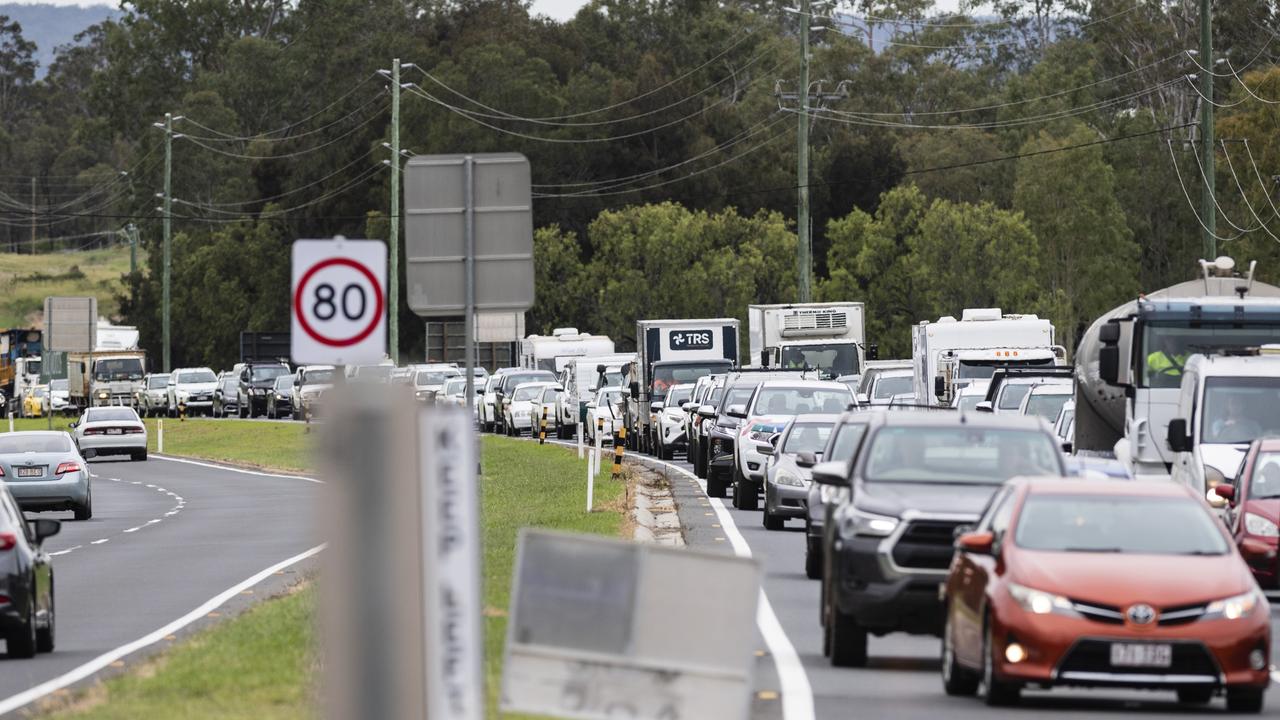Coronavirus: Why global recession will hit Australia hardest
As another global recession becomes inevitable, Australia is in trouble – we’re coming into this battle wounded, perhaps fatally so.

News
Don't miss out on the headlines from News. Followed categories will be added to My News.
Australia’s economy has a particular vulnerability that matters right now – high rates of underemployment. Hundreds of thousands of Aussies have, for years, wanted to work more hours but been unable to get them.
A few months ago, this was a problem. Now, with the coronavirus burning through the economy, it’s a crisis.
RELATED: Follow the latest coronavirus updates
RELATED: National tally: Coronavirus cases in Australia
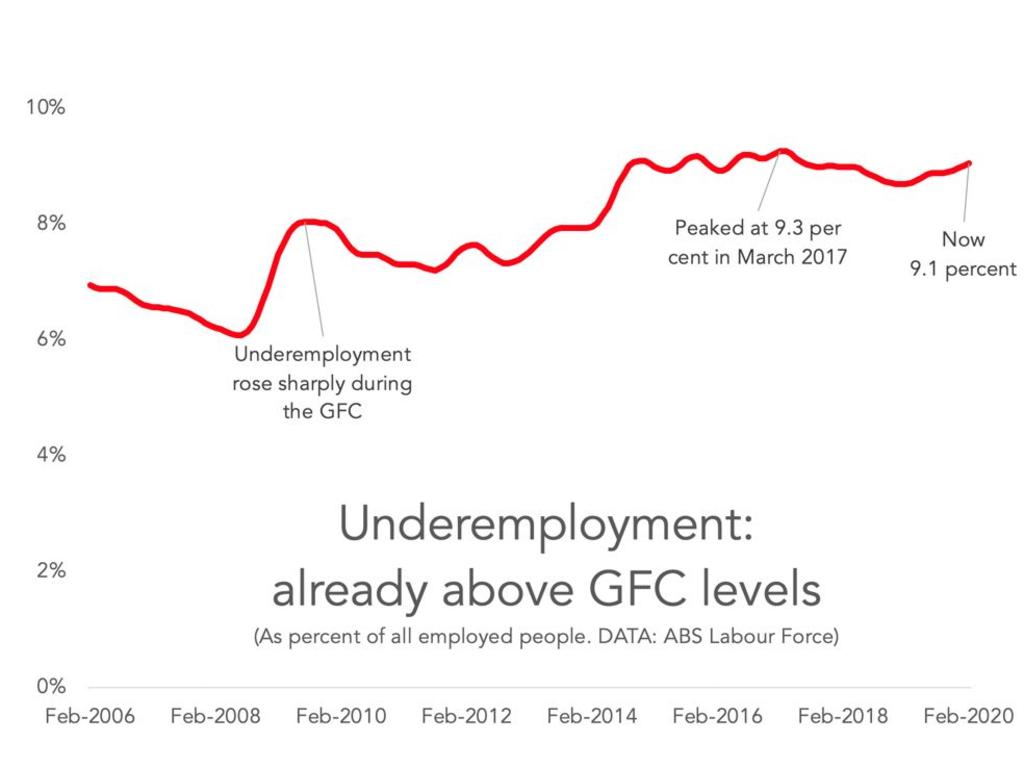
Ratings Agency S&P Global singled out Australia’s labour market as our big problem in a special coronavirus report it issued this week.
“Australia is an example of an economy vulnerable to labour market shocks. While the headline unemployment rate is low, the underemployment rate – that is the proportion of workers that have a job but would like to work longer hours – has remained stubbornly high at over 8 per cent.
“The underemployment problem is likely more acute in the accommodation and catering sectors, which account for over 7 per cent of total employment. Of these jobs, over 60 per cent are part time. While this give employers flexibility in reducing hours, the impact on workers can be brutally swift. In turn, this will hit consumer confidence and household income and spending.”
Those workers who are tenuously attached to the labour market – independent contractors and casual employees – are going to bear the greatest hit from the economic contraction that is happening.
So who are these people? The Government doesn’t directly count casual employees, but it does record the people who don’t have access to sick leave, which is essentially the same thing.
The next graph shows who lacks access to sick leave, broken down by weekly earnings. It starkly illustrates the problem: Low income earners are most likely to be casuals.
RELATED: Aussie dollar falls to 17-year low
RELATED: RBA slashes interest rates to 0.25%
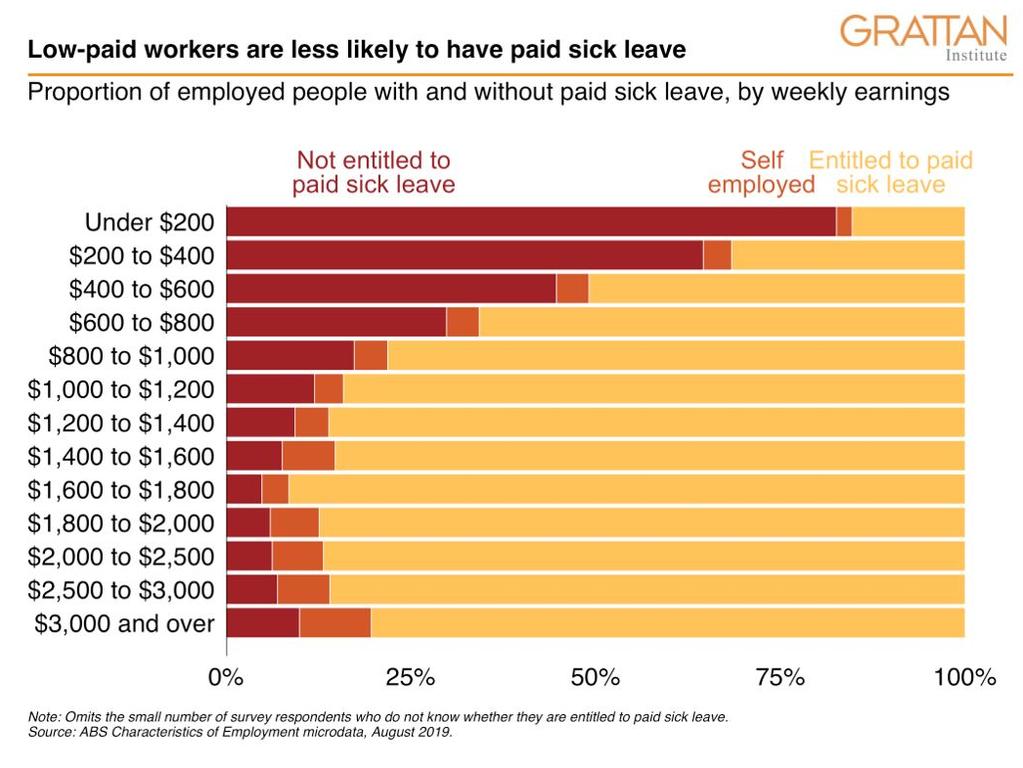
The kind of employees who are easy to put out of work are also the ones who can’t afford to lose their job. It’s an awful paradox.
For many of these people the only thing standing between them and homelessness will be Centrelink. I certainly hope Centrelink is hiring right now, because it is going to have a lot of claims to process in the coming weeks and months.
A CASUAL THING
Casual work used to be mostly for women. Not anymore. The next chart comes from the Parliamentary Library, and it shows that the share of the labour force working casual jobs has actually fallen for women, but it rose sharply for men between 1992 and 2016.
RELATED: All your questions about coronavirus answered
RELATED: How ‘flattening the curve’ saves lives
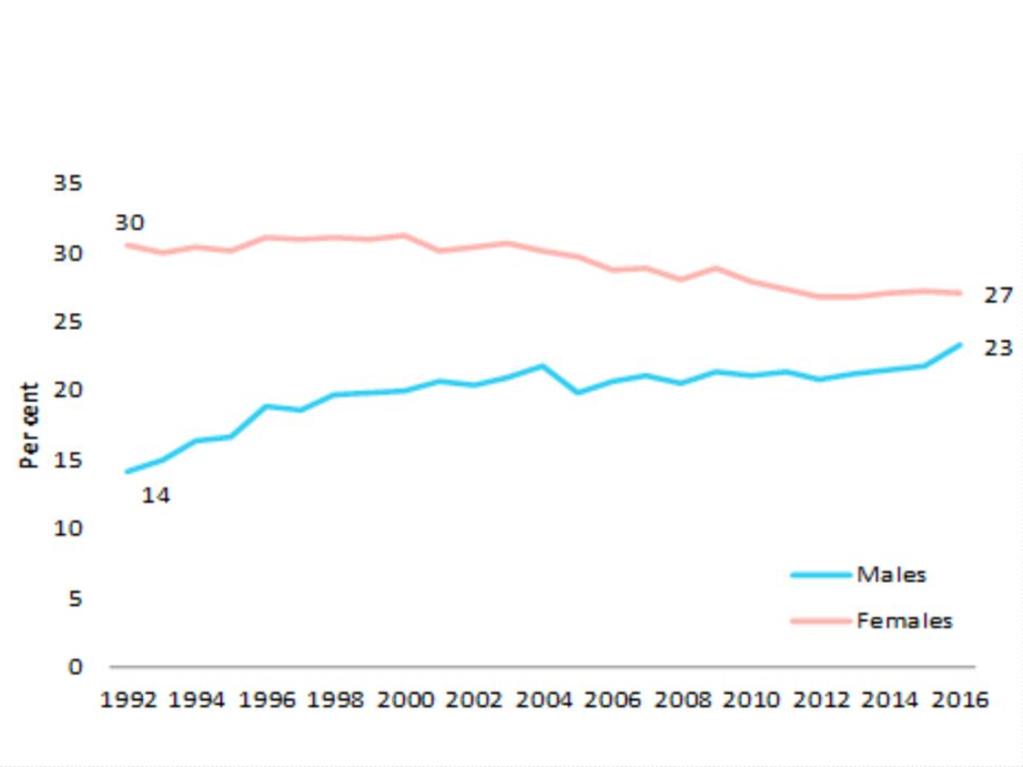
LESSONS OF THE GFC
During the Global Financial Crisis (GFC), Australia’s unemployment rate didn’t rise too much. It lifted less than 2 percentage points, in fact, from a little over 4 per cent to just under 6 per cent.
That happened because Australian employers chose to reduce hours instead of cutting people’s jobs altogether. Much like we are seeing at Qantas right now. Instead of laying off its workforce, Qantas is putting staff on leave. That makes it much easier for the company to spring back into action later.
As you can see in the next graph, the total hours worked went negative in 2009/10, but the level of employment did not. Companies spread the pain around among all their employees instead of cutting people off entirely.
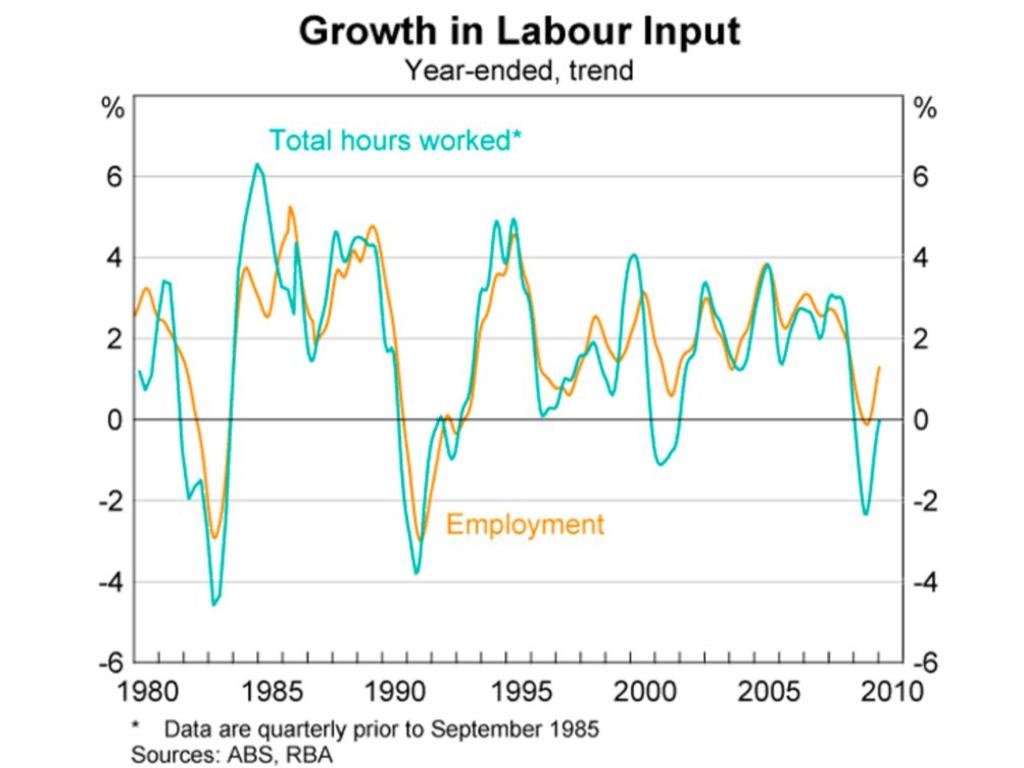
But we started that crisis from a much better position – lower unemployment, much lower underemployment, and a Reserve Bank with much more capacity to cut interest rates. This time we come to the battle already wounded. It is going to take a much bigger national effort this time to prevent the vulnerabilities in our labour market turning into a catastrophe.
Jason Murphy is an economist | @jasemurphy. He is the author of the book Incentivology.




